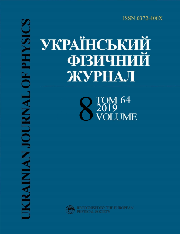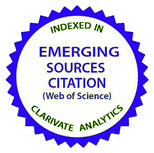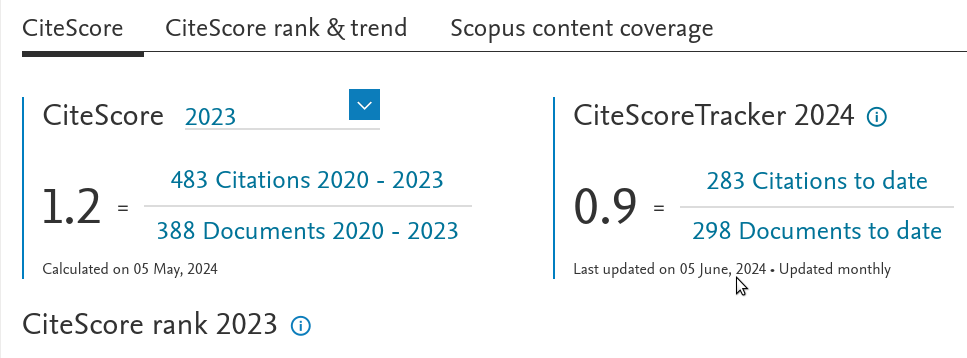Пошук частинок нової фізики в експерименті SHiP
DOI:
https://doi.org/10.15407/ujpe64.8.689Ключові слова:
physics beyond the Standard Model, hidden particles, hidden sectors, renormalizable portals, intensity frontier experiment, SHiP, SPSАнотація
Незважаючи на величезнi успiхи Стандартної Моделi фiзики елементарних частинок (СМ), iснують окремi явища (нейтриннi осциляцiї, барiонна асиметрiя Всесвiту, темна матерiя тощо), якi СМ пояснити не в змозi. Данi явища вказують на необхiднiсть модифiкацiї СМ та введення нових частинок. Експерименти з пошуку частинок нової фiзики можна роздiлити на два типи: експерименти, в яких намагаються досягти найбiльшої енергiї частинок, що зiштовхуються, та експерименти, в яких намагаються досягти найбiльшої кiлькостi необхiдних реакцiй. В експериментах першого типу намагаються безпосередньо утворити та зареєструвати новi важкi частинки. В експериментах другого типу намагаються безпосередньо утворити та зареєструвати новi легкi частинки, що слабко взаємодiють з частинками СМ. В роботi обговорюється майбутнiй експеримент з високою iнтенсивнiстю подiй SHiP, що проводитиметься на прискорювачi SPS CERN, його технiчнi характеристики та переваги.
Посилання
S.L. Glashow. Partial symmetries of weak interactions. Nucl. Phys. 22, 579 (1961). https://doi.org/10.1016/0029-5582(61)90469-2
S. Weinberg. A Model of leptons. Phys. Rev. Lett. 19, 1264 (1967). https://doi.org/10.1103/PhysRevLett.19.1264
A. Salam. Weak and electromagnetic interactions. In: Proc. of 8th Nobel Symposium. Edit. by N. Svartholm (Almquist and Wiksells, 1968), p. 367.
A. Strumia, F. Vissani. Neutrino masses and mixings and... arXiv:hep-ph/0606054 (2010).
D.S. Gorbunov, V.A. Rubakov. Introduction to the Theory of the Early Universe: Hot Big Bang Theory (World Scientific, 2011). https://doi.org/10.1142/9789814322256
W. de Boer. Grand unified theories and supersymmetry in particle physics and cosmology. Prog. Part. Nucl. Phys. 33, 201 (1994). https://doi.org/10.1016/0146-6410(94)90045-0
S. Alekhin. et al. A facility to search for hidden particles at the CERN SPS: the SHiP physics case. Rept. Prog. Phys. 79, 124201 (2016).
I. Antoniadis, A. Boyarsky, S. Espahbodi, O. Ruchayskiy, J.D. Wells. Anomaly driven signatures of new invisible physics at the Large Hadron Collider. Nucl. Phys. B 824, 296 (2010). https://doi.org/10.1016/j.nuclphysb.2009.09.009
J. Alexander et al. Dark Sectors 2016 Workshop: Community report. arXiv:1608.08632, FERMILAB-CONF-16-421 (2016).
W. Bonivento et al. Proposal to search for Heavy Neutral Leptons at the SPS. arXiv:1310.1762 (2013).
M. Anelli et al. A facility to Search for Hidden Particles (SHiP) at the CERN SPS. arXiv:1504.04956, CERN-SPSC-2015-016, SPSC-P-350 (2015).
A. Akmete et al. The active muon shield in the SHiP experiment. JINST 12, P05011 (2017).
C. Ahdida et al. Sensitivity of the SHiP experiment to Heavy Neutral Leptons. J. High Energ. Phys. 2019, 77 (2019).
C. Ahdida et al. The experimental facility for the Search for Hidden Particles at the CERN SPS. JINST 14, P03025 (2019).
I. Boiarska, K. Bondarenko, A. Boyarsky, V. Gorkavenko, M. Ovchynnikov, A. Sokolenko. Phenomenology of GeV-scale scalar portal. arXiv:1904.10447v2 (2019). https://doi.org/10.1007/JHEP08(2019)061
https://ship.web.cern.ch/ship.
J. Beacham et al. Physics Beyond Colliders at CERN: Beyond the Standard Model Working Group Report. arXiv:1901.09966, CERN-PBC-REPORT-2018-007 (2019).
R. Acquafredda et al. OPERA collaboration. The OPERA experiment in the CERN to Gran Sasso neutrino beam. JINST 4, P04018 (2009).
Downloads
Опубліковано
Як цитувати
Номер
Розділ
Ліцензія
Ліцензійний Договір
на використання Твору
м. Київ, Україна
Відповідальний автор та співавтори (надалі іменовані як Автор(и)) статті, яку він (вони) подають до Українського фізичного журналу, (надалі іменована як Твір) з одного боку та Інститут теоретичної фізики імені М.М. Боголюбова НАН України в особі директора (надалі – Видавець) з іншого боку уклали даний Договір про таке:
1. Предмет договору.
Автор(и) надає(ють) Видавцю безоплатно невиключні права на використання Твору (наукового, технічного або іншого характеру) на умовах, визначених цим Договором.
2. Способи використання Твору.
2.1. Автор(и) надає(ють) Видавцю право на використання Твору таким чином:
2.1.1. Використовувати Твір шляхом його видання в Українському фізичному журналі (далі – Видання) мовою оригіналу та в перекладі на англійську (погоджений Автором(ами) і Видавцем примірник Твору, прийнятого до друку, є невід’ємною частиною Ліцензійного договору).
2.1.2. Переробляти, адаптувати або іншим чином змінювати Твір за погодженням з Автором(ами).
2.1.3. Перекладати Твір у випадку, коли Твір викладений іншою мовою, ніж мова, якою передбачена публікація у Виданні.
2.2. Якщо Автор(и) виявить(лять) бажання використовувати Твір в інший спосіб, як то публікувати перекладену версію Твору (окрім випадку, зазначеного в п. 2.1.3 цього Договору); розміщувати повністю або частково в мережі Інтернет; публікувати Твір в інших, у тому числі іноземних, виданнях; включати Твір як складову частину інших збірників, антологій, енциклопедій тощо, то Автор(и) мають отримати на це письмовий дозвіл від Видавця.
3. Територія використання.
Автор(и) надає(ють) Видавцю право на використання Твору способами, зазначеними у п.п. 2.1.1–2.1.3 цього Договору, на території України, а також право на розповсюдження Твору як невід’ємної складової частини Видання на території України та інших країн шляхом передплати, продажу та безоплатної передачі третій стороні.
4. Строк, на який надаються права.
4.1. Договір є чинним з дати підписання та діє протягом усього часу функціонування Видання.
5. Застереження.
5.1. Автор(и) заявляє(ють), що:
– він/вона є автором (співавтором) Твору;
– авторські права на даний Твір не передані іншій стороні;
– даний Твір не був раніше опублікований і не буде опублікований у будь-якому іншому виданні до публікації його Видавцем (див. також п. 2.2);
– Автор(и) не порушив(ли) права інтелектуальної власності інших осіб. Якщо у Творі наведені матеріали інших осіб за виключенням випадків цитування в обсязі, виправданому науковим, інформаційним або критичним характером Твору, використання таких матеріалів здійснене Автором(ами) з дотриманням норм міжнародного законодавства і законодавства України.
6. Реквізити і підписи сторін.
Видавець: Інститут теоретичної фізики імені М.М. Боголюбова НАН України.
Адреса: м. Київ, вул. Метрологічна 14-б.
Автор: Електронний підпис від імені та за погодження всіх співавторів.

















